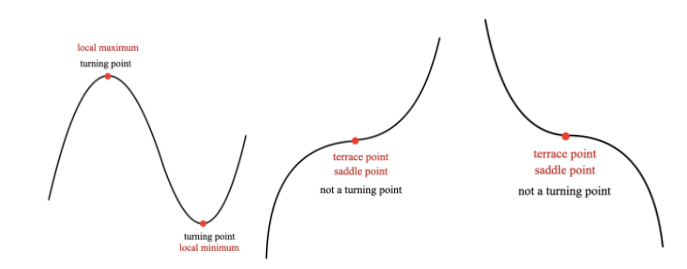Graphs of polynomials
THIRD-DEGREE POLYNOMIALS
TIP: How to effectively work with sliders.
Leading coefficient
Describe how the value of affects the graph of a third-degree polynomial.
Constant coefficient
What point does the coefficient represent on the graph?
Zeros (x-intercepts)
How many zeros can a third-degree polynomial have? Consider all possible cases.
Turning points and terrace points

Turning points
What is the MAXIMUM NUMBER of turning points that a third-degree polynomial can have? (Turning point: local minimum or local maximum)
Terrace points
What is the MAXIMUM number of TERRACE POINTS that a third-degree polynomial can have?
FOURTH-DEGREE POLYNOMIALS
Zeros
How many zeros can a fourth-degree polynomial have?
Turning points
What is the MAXIMUM NUMBER of turning points that a fourth-degree polynomial can have? (Turning point: local minimum or local maximum)
Terrace points
What is the MAXIMUM number of terrace points that a fourth-degree polynomial can have?
Higher-degree polynomials
GENERAL RULE about the number of ZEROS of a polynomial of n-th degree.
Complete the statement: Polynomials of degree have at most ......... real zeros.
GENERAL RULE about the number of TURNING POINTS of a polynomial of n-th degree.
Complete the statement. Polynomials of degree have at most ....... turning points.